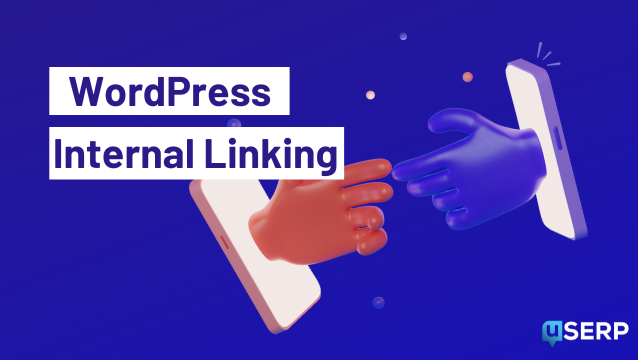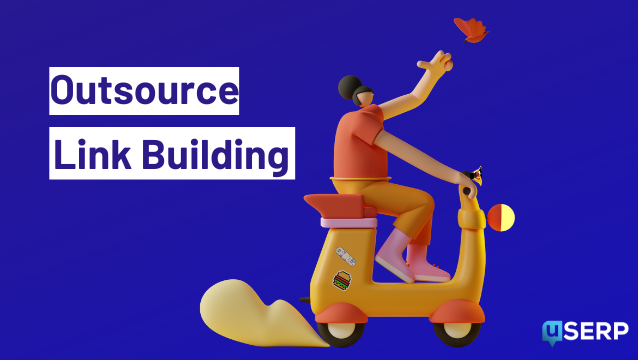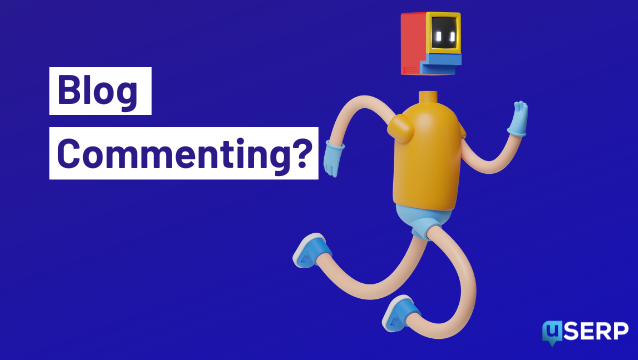At first, when businesses were faced with the unprecedented onslaught of the coronavirus, they shifted their operations to digital channels merely as a means of survival.
Gradually, as the onslaught solidified, proceeding to coronate itself as the new normal, businesses could no longer afford to rely on digital channels simply for survival; now, they had to embrace digitization to ensure their sustenance.
And with this leap followed many changes, with that in customer behavior being the most noticeable of them all.
As many as 60% of customers now have higher expectations of their digital experience than before the pandemic- greater expectations for convenience and security and increased demand for online payments.
As a result, businesses were left with no choice but to completely revisualize the customer journey to be able to accommodate all of these new changes. If earlier delivering a seamless customer experience was among the “top three things to do” for a marketer, now it has undoubtedly become their topmost agenda.
In a world where customers get exposed to your business through multiple devices and channels, is it even possible to deliver a consistent and unique experience to them all?
Yes, the answer lies in cross-channel marketing.
By letting businesses establish an interconnectedness between their various marketing channels, cross-channel marketing enables them to deliver a truly integrated and personalized experience to their customers.
The result? Greater interaction, increased traffic, and higher conversions.
However, implementing a full-proof cross-channel marketing strategy is no picnic. Should you not have the right strategies and techniques in place, things can go south in the blink of an eye.
To make sure you always stay on track, today, we’ll walk you through a host of effective cross-channel marketing growth and engagement strategies.
Best Practices To Spruce Up Your Cross-channel Marketing Efforts
The basic idea behind wanting to implement a cross-channel marketing strategy is to intercept your audience with the right message at the right time. Besides having a positive business impact, this goes a long way towards consolidating your brand reputation as well.
Keep Data at the Core
With every passing day, customer journeys continue to become more complicated and nuanced.
For instance, get this- in 2000, the average customer needed only 1-2 touchpoints with a brand to complete their transaction or purchase. Fifteen years later, in 2015, the number of touchpoints had increased to 3-6. While this, of course, makes matters more challenging for businesses, there’s also an extremely rewarding upside to this.
By interacting with your brand through more channels and devices than ever before, customers are essentially handing you over valuable traces of data revolving around their identity, likes and preference, purchase history, behavior, and other parameters. Find the right channel for collecting data because some customers want to share their experience through a phone system, and others prefer to participate in the survey you send via email.
Now, with this comprehensive data set at your disposal, you get the liberty of crafting and delivering personalized experiences across the entire customer lifecycle, irrespective of which channel your consumer is using to interact with your business.
The growing complexity of user journeys means marketers can no longer afford to view any single channel in an isolated manner- it will only lead to misleading observations and inferences. There is already an inherent overlap between your various marketing channels; implementing a cross-channel marketing strategy allows you to reinforce and amplify that interconnectedness and, ultimately, offer your customers a seamless user experience.
Different channels draw different customer demographics and, so to implement an efficient cross-channel strategy, you first need to have a thorough understanding of your customers. Multi-channel syncing solutions such as LitCommerce can help you learn the fundamentals of your customer base.
You need to collect data about your customers from all the possible channels – social media, website, email marketing and CRMs. For instance, if you’re using Salesforce as a company CRM, link Salesforce to Excel to keep customer data in one place to better understand your buyer persona and opportunities for future sales.
Focus on capturing customer data in a compliant manner and creating diverse buyer personas. At the end of the day, it all boils down to this- the better you know your customers, the greater will be the success of your cross-channel marketing strategy.
If you’re stuck creating a tangible plan of action for your data sets, you could start by obtaining the responses to the following questions:
- Which data points do I need to deliver hyper-personalized messages to individual customers?
- Which customer (or business) data points shape my segmentation thresholds?
- What platform will act as the system of record for the consolidated customer profile?
- Which stages of the customer buying journey provide me with the most insights?
Moreover, it’s crucial to ensure that you are collecting customer data, including phone numbers, in accordance with legal requirements like TCPA (Telephone Consumer Protection Act) compliance. This includes obtaining express written consent for automated marketing messages, adhering to frequency limits, and maintaining proper records. By incorporating TCPA compliance into your data collection strategy, you not only enhance your cross-channel marketing efforts but also mitigate legal risks.
See Your Journey Through Your Customers’ Lenses
Often businesses get so occupied with designing their customer journeys that they overlook navigating the journeys for themselves. While this is not a grave mistake per se, it certainly robs them off from some pretty valuable insights.
Walking through the sign-up process yourself can help you answer the following critical questions:
- Is the process easy and user-friendly?
- Are there any obstacles or hurdles that would discourage the customer from enrolling?
- Is the frequency with which you are asking for opt-ins ideal?
But improving the journey isn’t necessarily the only objective behind donning the customers’ lenses. It also helps you discover new and inventive ways of capturing customer information.
For example, you can always consider incentivizing the process- offer them special deals and unique discounts in exchange for their contact numbers and email addresses.
The main objective of assessing and examining the customer journey is to identify the scope for including seamless opportunities for buyers to opt-in through their purchase experience.
Equally important is to evaluate whether you’re giving customers on one channel the ability to opt-in to other channels- from mobile app to email, from website to social media, and the like.
Establish The Right Channel Mix
The secret behind implementing a successful cross-channel marketing strategy lies in understanding which channel to use to interact and engage with individual customers. And to ace this, you need to have an in-depth knowledge of the diverse buyer personas in your data set.
Remember, no two customers will ever behave in the same manner. So, it is essential that you communicate with every customer based exclusively on their likes and preferences rather than greeting them with generic messages and updates.
But, how do you discover their interests in the first place?
A simple yet highly effective way of going about this is to set up preference centers across your channels. What a preference center essentially does, is hand over the steering wheel to the customer themselves. They choose the topics that hold their fancy, and you, in turn, tailor your communications accordingly.
Further, you can also customize the preference centers to let your customers choose the channels in which they want to receive their messages. This not only improves brand loyalty but also significantly enhances your sender reputation. Because the customer is now receiving exactly what they signed up for, there is absolutely no reason to worry about them blocklisting or reporting you as spam.
Having said that, it is not practical to expect everyone to have the patience to fill out a preference center for your convenience.
So, what can you do to understand the channel preferences of this particular segment?
Analyze their engagement. Observe their purchasing journeys closely to unravel useful insights- which customers engage with which channels, the frequency of their engagement, the last channel they visited before completing the purchase, and other similar stuff.
Subsequently, you can leverage these findings to deliver highly customized and rewarding cross-channel experiences. Doing so will also help you understand which channels you can rely on to give a leg up to others, should their engagement and performance in general ever happen to plateau.
Use Email as the Driving Force of Your Cross-channel Strategies
Nothing much remains to be said about the sheer prowess of email as a marketing channel.
From providing a staggering 4200% ROI to flaunting as many as 4 billion daily users, email has managed to establish itself as the marketing channel of choice for the majority of businesses out there.
Well, did you know that email can also act as the driving force of your cross-channel marketing efforts? How? The answer’s multifold.
For starters, email can be utilized to drive traffic to your other channels. By embedding links to your social media handles, mobile applications, and website blogs in your newsletters and promotional emails, you can redirect your subscribers towards those channels.
Additionally, marketers can practice email list segmentation to send hyper-personalized and targeted messages their audiences’ way. Segmentation allows businesses to divide their contacts into different groups based on various parameters such as gender, ethnicity, browsing history, geographic location, position in the sales funnel, and the like.
Consequently, this opened the floodgates to implementing ecommerce personalization at scale.
Triggered emails, a virtue of email automation, allow you to send automated emails to your subscribers corresponding to their activities and interactions. This enhances the customer experience by leaps and bounds. You need to prioritize email security and setup DMARC to ensure that your triggered emails are authenticated and protected from phishing attacks.
Triggered emails can take many forms- onboarding emails, abandoned cart emails, post-purchase emails, and product recommendation emails, to name a few.
Moreover, email automation also enables businesses to respond to customer queries and grievances with curated responses, sparing them from the trouble of physically stationing an individual for the same.
Earlier, we mentioned how capturing data from your customers in a non-compliant manner is central to implementing a successful cross-channel strategy.
Guess what? You can use emails to collect vital customer information like birthdate, phone number or vanity number, job profile, email address, and city/country of residence.
How Can You Improve Your Cross-channel Engagement?
Sure, integrating multiple marketing channels to deliver a personalized and integrated experience to your target audience is the stuff of dreams for every business.
But making it a reality is where many stumble and fail.
Read on to find out what you can do to amp up your cross-channel engagement.
Always Highlight Your Brand Message
In the course of reaching out to your customers through multiple channels, brands often neglect their brand message.
While cross-channel marketing is obviously a potent means of maximizing your reach and visibility, it only provides the best returns when you’re able to keep your messages consistent across all platforms. That includes your brand message, besides the usual advertisements and promotional content.
Now the question is, how do you arrive at a compelling brand message?
Brand messages are subjective, and there exists no “one-shoe-fits-all” recipe, but you’d do well to keep a couple of points in mind:
- Make sure your brand message addresses the customers’ pain points.
- Your brand message should convey the USP (unique selling proposition) of your product or service.
Once you’ve sealed your brand message, the focus shifts to ensuring that it is delivered consistently across all platforms. Irrespective of how you want to position your brand- fun-loving, formal and grave, irreverent, outspoken- make sure all your blogs, tweets, social media posts, and newsletters reflect the same.
Hold Attention Through Intelligent Cross-channel Moments
One of the best things about implementing cross-channel marketing is that, unlike multi-channel marketing, when customers hop channels in this setup, they don’t have to start from scratch.
In this arrangement, all the participating channels are continuously building off and complementing one another. As a marketer, it is your responsibility to leverage this interconnectedness to manufacture intelligent cross-channel moments.
Suppose a customer has just completed a purchase on your website. First, send them an order confirmation email. In this email, prompt them to download your application to receive continuous order-related updates.
Once the item is ready to be shipped, send them real-time updates over SMS or push app notifications rather than email. You must be clear and concise about your updates due to push notification character limits. People are more likely to check updates on their phones than open their email inboxes.
You can lead them to either your application or your website through your push app notification- that call rests with you. In a nutshell, you must synchronize your channels to furnish a cohesive customer journey. This way, you create a connected commerce experience for your customers and let them move seamlessly from one channel to another utilizing both sms and chat to keep them engaged.
Test, Measure, and Optimize
You’ll never find out what’s best for your customers unless you routinely test your campaign strategies across all your channels.
Remember, customer expectations and market trends are incredibly dynamic in nature. So, what might have worked well for your business a month ago, might not hold the same ground in the present.
And there’s no better way of determining the best course of action than by continuously testing, measuring, and optimizing your strategies.
Wrapping Up
Cross-channel marketing has now become an indispensable part of every marketer’s toolkit, and rightly so.
Delivering personalized, integrated, and seamless experiences is the only way forward for brands and businesses looking to cut through the noise generated by run-of-the-mill marketing campaigns and win their audience’s attention in the process.
To help you get started with your cross-channel marketing journey, we compiled a neat infographic on the same in collaboration with our friends at cordial. You can find it over here.

- Cross-channel Marketing Growth and Engagement Strategies To Help You Drive More Traffic - November 2, 2021
- How To Use Email Marketing To Give A Leg Up To Your SEO? - August 20, 2021









